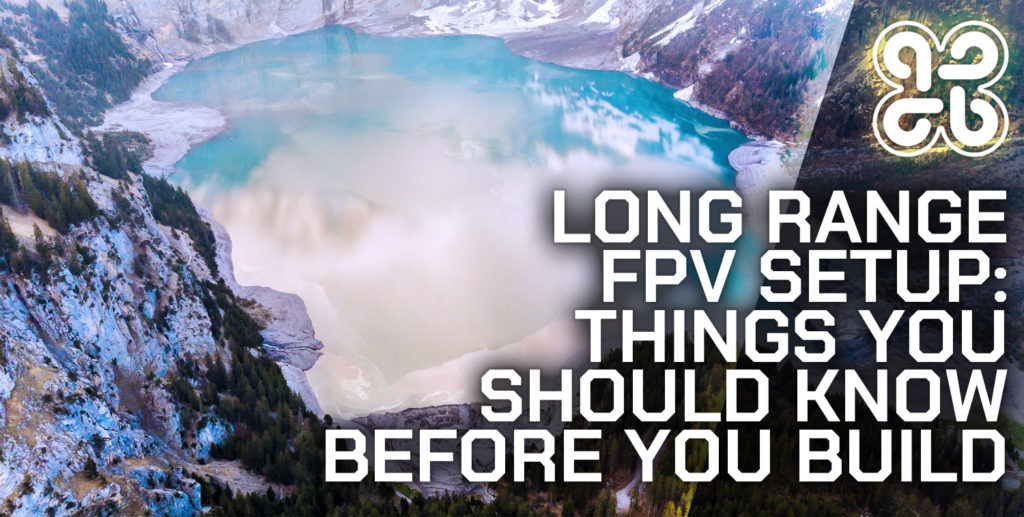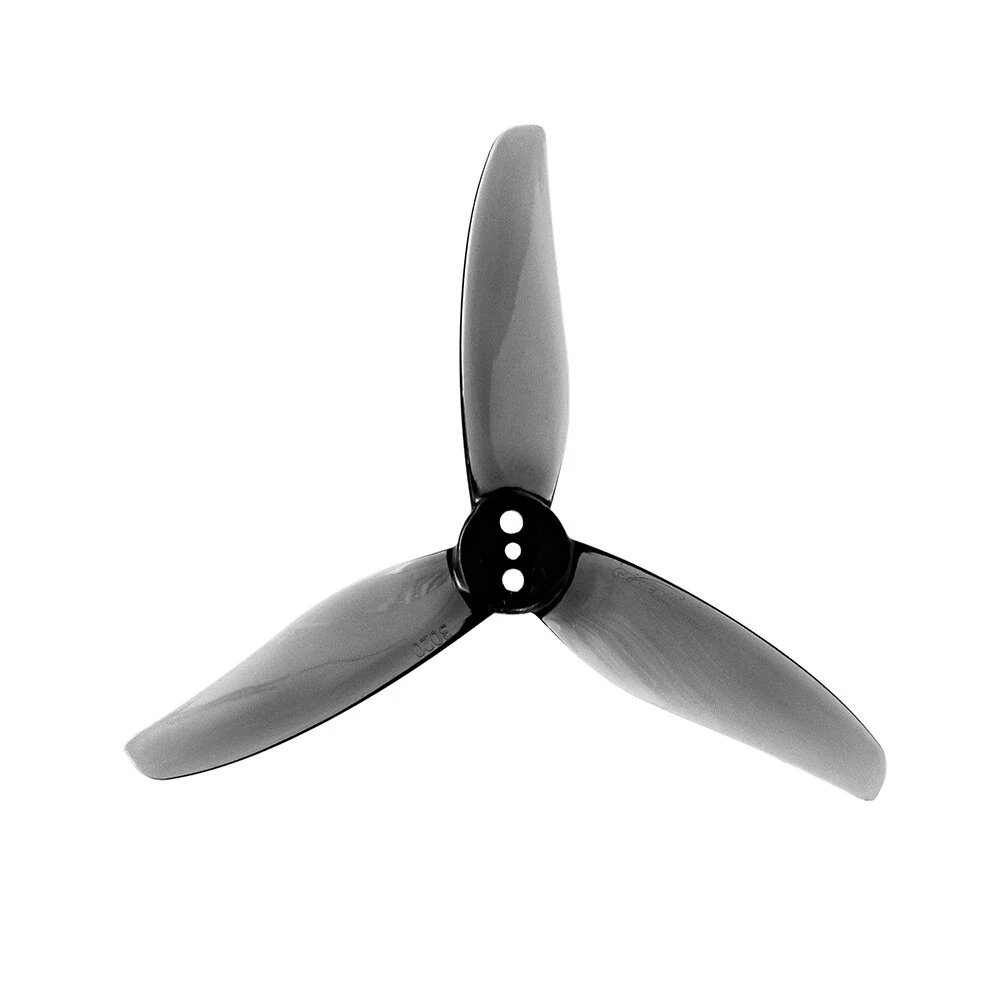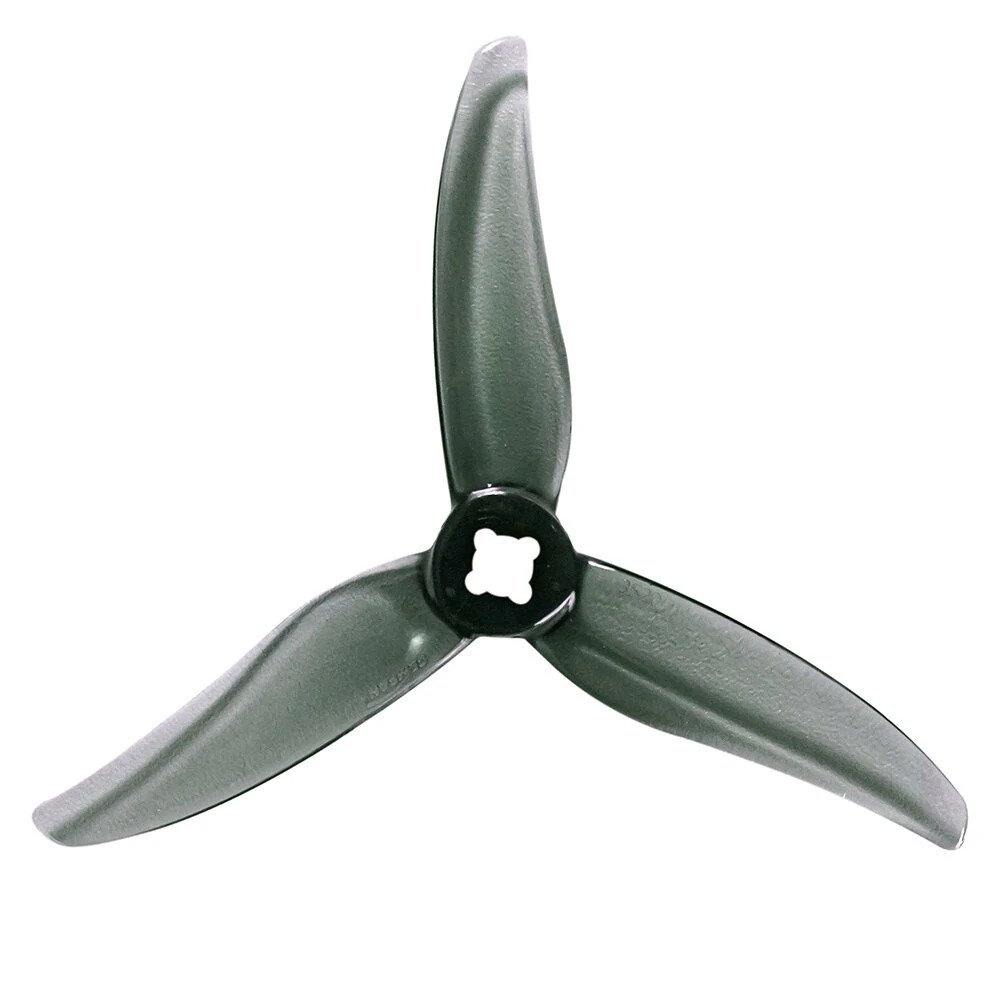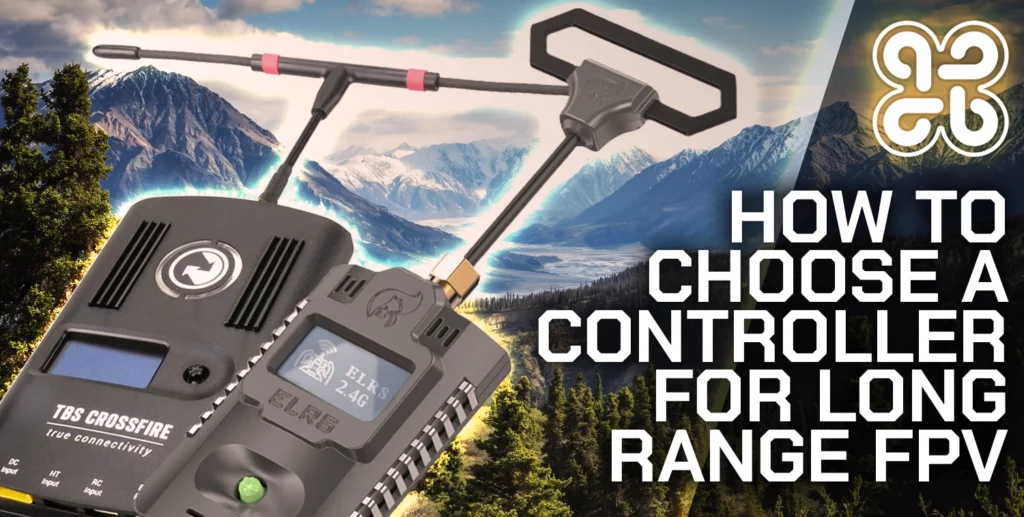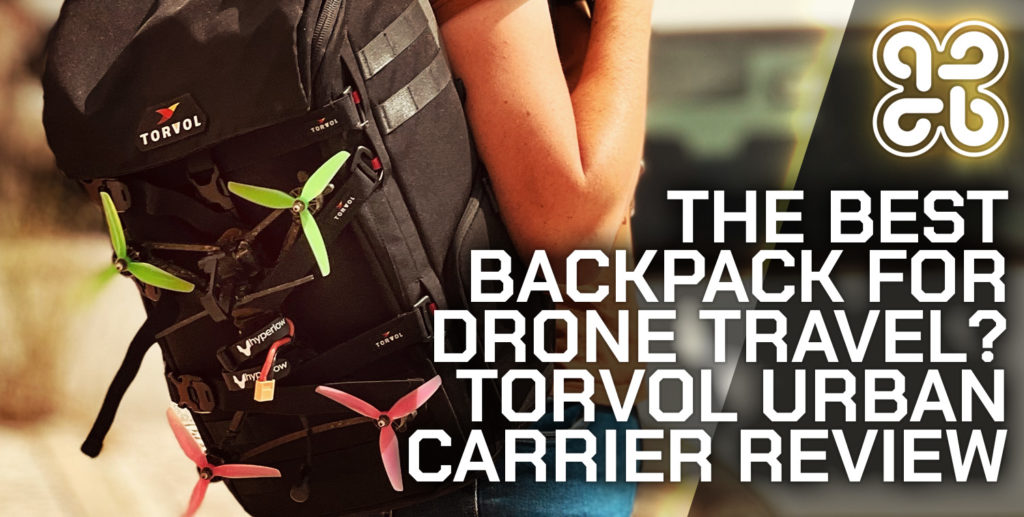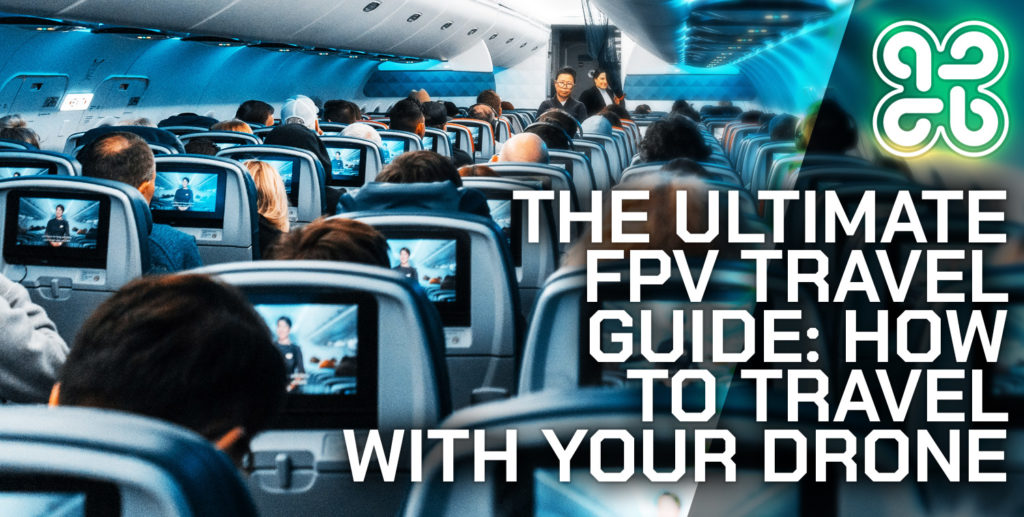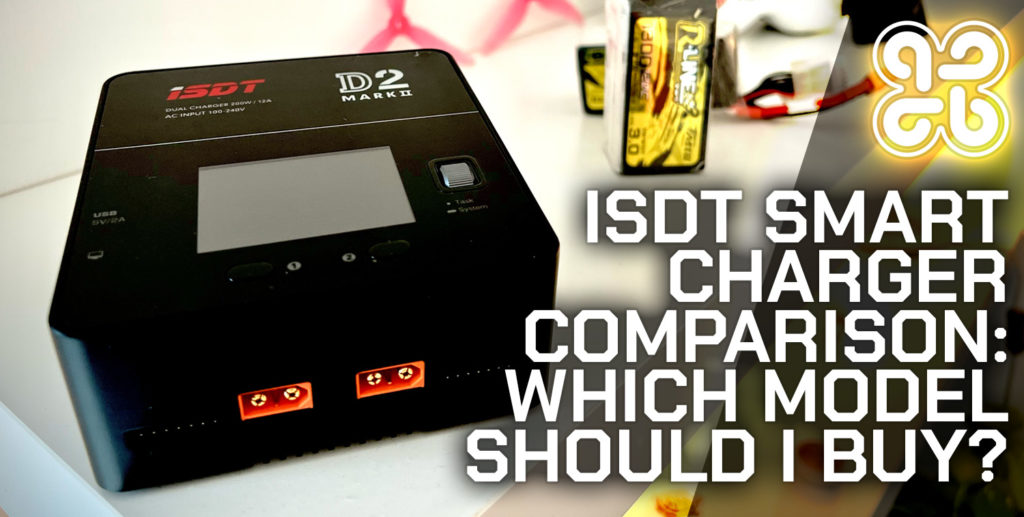If you have been dreaming of long range FPV and you have finally decided to go for it, read these top tips before you start your build.
When you start getting into long range FPV it becomes a whole different challenge. There are more things to consider than only your flying skills.
It can become somewhat of an engineering challenge. You need a solid build that has optimal components.
In this article we will take a look at the most important considerations when building a modern long range FPV build.
- What Is The Best Frame for Long Range FPV?
- What Are The Best Propellers for Long Range FPV?
- What Batteries are Best for Long Range FPV?
- What Are The Best Motors For Long Range FPV?
- What Are The Best Frequencies to Use for Long Range FPV?
- What Firmware Should I use For Long Range FPV?
- What Radio Transmitter Should I use For Long Range FPV?
What Is The Best Frame for Long Range FPV?
The most optimum frame choice for long range FPV is one that is both the lightest and largest that you can practically choose for your build.
A lighter frame is a huge benefit for long range as less weight requires the motors to draw less electrical current in order to keep the quad flying.
A lower current draw on the battery pack will directly result in longer flight times, which will allow you to fly a greater distance.
A larger frame also has several benefits, primarily that it allows the use of larger propellers, which result in better efficiency due to something known as disc loading.
A larger frame with larger motors and a larger battery also has more power in general.
However components such as the flight stack as well as the GoPro or alternative HD camera still remain the same weight.
This means that the weight added to the frame in order to achieve flight and filming capability is a smaller ratio of the AUW, giving more efficiency.
With all of that said the frame still needs to be a size that is practical to use.
A 7 inch frame tends to be the most popular choice as it has the optimum ratio of size, weight, cost and practicality.
However excellent results have also been demonstrated with smaller frame sizes, including the more common 5 inch size.
The best frame for long range FPV will most likely be either a 6 inch or 7 inch frame, whereby the 6 inch frame offers the benefits of a 5 inch frame but with improved efficiency.
A 7 inch frame would be the ideal choice as it has the most efficiency and lifting capability, whilst still remaining a practical choice with plenty of compatible parts being available.
However for some the increased size may still prove impractical, for example if you intend on doing a lot of travelling.
A 7 inch frame will also prove to be the most costly option, especially when considering battery choice.
7 Inch Frame
The 7 inch frame is the industry standard for serious long range FPV.
Pros
- Carries more weight.
- Large props, greater efficiency.
- GoPro / HD camera weight is less percentage of AUW.
- Longer frame can carry more batteries.
- More space for carrying more equipment.
Cons
- Frame is more expensive.
- Some components also more expensive, such as motors.
- Larger in size, less convenient for travel.
6 Inch Frame
The 6 inch frame offers some good benefits over the 7 inch frame if portability or cost are a consideration.
Pros
- Can accept a 5 inch or 6 inch propeller, the latter being more efficient.
- Has efficiency benefits over 5 inch whilst still being as portable.
- More lightweight than the 7 inch option.
- Cheaper build cost than the 7 inch option, for example smaller motors.
- Can achieve similar endurance to 7 inch with less expense required for batteries.
Cons
- Component parts a larger percentage of AUW compared with 7 inch.
- Less choices of 6 inch frame compared with 5 inch and 7 inch.
- Less versatile than a 5 inch frame
5 inch frame
The 5 inch frame is the most popular frame size in general, with great performance and convenient size. It is certainly capable of long range flight whilst also being a great allrounder.
Pros
- A great allrounder if you want to build a medium to long range quad that can also do freestyle.
- Most common frame size, many frame options available.
- Slightly smaller than a 6 inch frame, the best option for portability.
Cons
- Not quite as good efficiency as a 6 inch or 7 inch build.
- Space for equipment can be more limited although a full GPS build is possible.
- GoPro or HD camera can be the highest percentage of AUW.
What Are The Best Propellers for Long Range FPV?
The best propellers for long range FPV are the ones that have the largest diameter and least amount of blades, whilst still remaining practical for your build.
When a propeller rotates, imagine that it creates a disc in the air with a diameter equal to twice the length of one of the blades.
The efficiency can then be calculated by using the ratio between the weight of the quad and area of the disc of each of the propellers.
Don’t worry if that is a little too complex to understand, the main thing to understand is that in general when we have a larger disc area (larger propellers) for the same given weight, it gives us greater efficiency.
It is a little beyond the scope of this article to discuss disc loading in detail, but if you want to understand it better the following video gives a great explanation that is easy to understand.
Another thing that can also affect the efficiency of a propeller is the number of blades.
Increasing the number of blades on a propeller increases the amount of drag and therefore reduces the efficiency.
Therefore it can be said that the most efficient choice for long range FPV, which will yield the longest flight times, will be a bi-blade propeller (two blades).
However there is some tradeoff, such as a bi-blade being more difficult to balance and more noisy.
Therefore if you are planning to make long range cinematic video it may be wise to consider tri-blade propellers, sacrificing a little efficiency for increased smoothness.
If you looking to break ultra-long range records, a bi-blade setup would be the way to go.
What Batteries are Best for Long Range FPV?
Lithium Ion (Li-ion) batteries are currently the best option for long range FPV when the goal is to cover as much range as possible.
Li-ion batteries offer more capacity for the same given weight when compared to Lithium Polymer (LiPo) batteries.
Reducing the weight without reducing the amount of energy stored in the battery will reduce the amount of work that the motors have to do in order to keep the quad in the air.
This in turn will reduce the current draw on the battery, making flight time longer and further increasing the range.
What are the disadvantages to using Li-ion batteries in long range FPV?
There is however a caveat to using Li-ion batteries and this is also the reason they are not commonly chosen over their more expensive Lithium Polymer (LiPo) counterparts.
Li-ion batteries have a much lower discharge rate, usually around 1C, which is much lower than a LiPo battery.
Therefore it is very important to ensure that propeller and motor choices don’t lead to excessive current draw on Li-ion batteries.
Should I choose Li-ion or LiPo batteries for long range FPV?
Li-ion batteries will be the best choice for ultra-long range enthusiasts who are trying to set records to achieving the longest range.
However for those who wish to achieve medium to long range, perhaps for the purpose of producing cinematic video, it may will be worth considering LiPo batteries.
There is also the consideration of cost. Although LiPo batteries are traditionally more expensive you may already own a set of 6S batteries for your 5 inch quad.
In which case it may be preferable to design a long range build that makes use of those existing batteries, thus saving you the expense of investing in Li-ion batteries.
What Are The Best Motors For Long Range FPV?
The best motors for long range FPV will be the ones that give you the most efficient performance, leading to the longest possible flight time and further range flown.
Motor choice will be a balancing act between the following variables:
- Total weight of the quad (AUW), which the motors must lift.
- The weight of the propellers that the motors must spin.
- The diameter and pitch of the propellers.
- The battery voltage (number of cells).
- The chosen motor KV value (RPM per volt applied).
Choosing motors can be a little tricky because there are so many variables and it is impossible to accurately calculate performance without carrying out real-world testing.
When deciding on the best choice for motors, you will first need to decide the following:
- The choice of frame size, using the information given earlier in the article.
- The choice of batteries, as discussed in the previous section.
- The all up weight (AUW) of the quad.
In order to calculate the AUW of the quad, I would advise making a list of parts using free Spreadsheet software like Google Sheets and include the weight of each component.
In doing so you can calculate the build cost and the AUW at the same time, whilst going through the process of deciding on a build.
Once you know your chosen frame size and AUW, you will have a ballpark to work within for propeller choice based upon the thrust required, and sticking to some rules of thumb that dictate the best efficiency:
- Your propeller diameter will be selected for your chosen frame size.
- A lighter propeller is better.
- Less pitch will give more efficiency.
- Less blades will give more efficiency.
When choosing motors you will have to consider the following parameters:
- The propeller mounting method.
- The motor size.
- The motor KV rating.
Propeller mounting method
You should first be aware of the two types of methods that exist for attaching the propellor to the motors, T-mount and M5 nut.
Propellers are designed either to work with one or the other method, although some are designed to be a universal fit.
You should choose a motor that has the correct type of mounting for the propeller that you wish to use.
T-mount propellers tend to be lighter and traditionally have been used on smaller models. This type of mount will be used on smaller motors for ultra-light builds.
If you are building a 7 inch quad or you want to carry a full sized GoPro, it is likely you will use M5 nut type propellers.
Motor Size
Motors sizes tend to be given in the form of a four digit number, whether the first two digits represent the diameter and the second two represent the height.
This means that there tends to be a choice between longer and thinner motors and shorter and wider (pancake) motors.
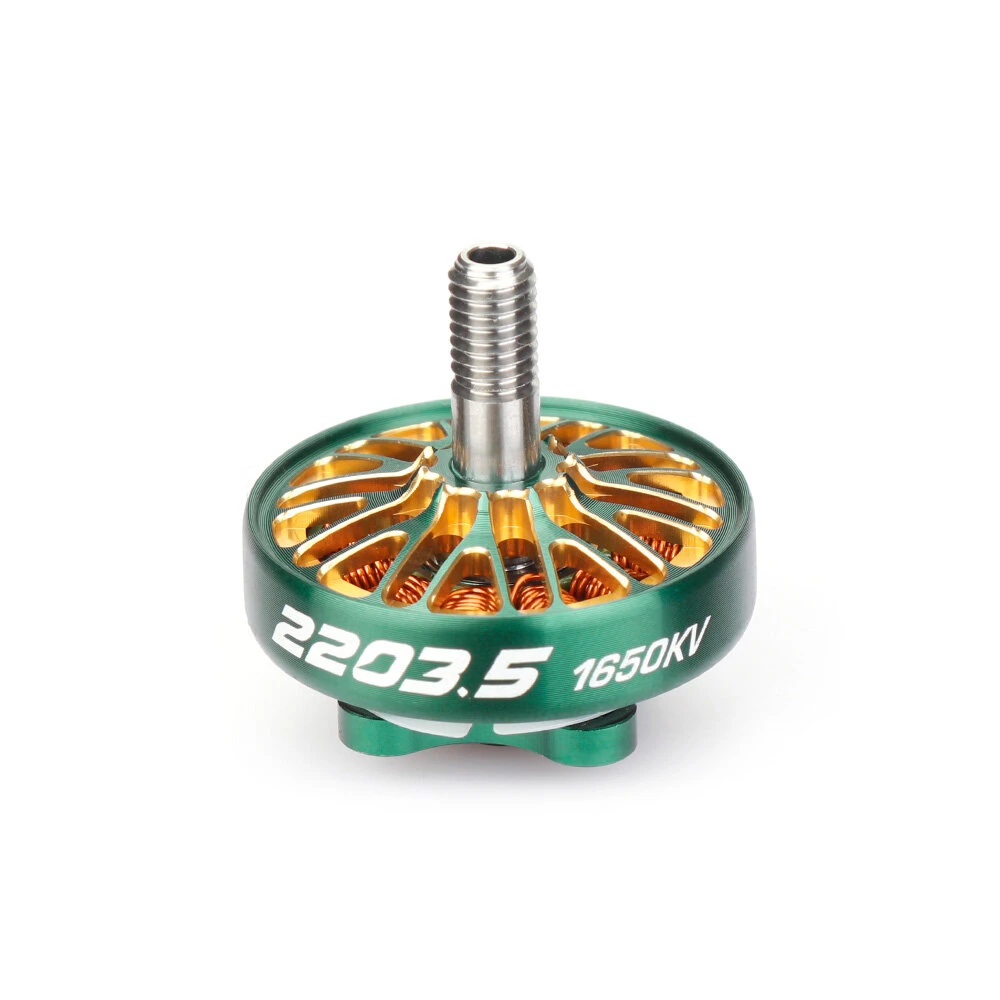
A shorter wider motor can be more efficient as motor efficiency depends a lot on cooling. Shorter wider motors can dissipate heat more effectively.
A shorter motor when compared to a taller motor with the same diameter will be lighter and thus more responsive.
However shorter wider motors do not produce as much torque, so be careful not to underspec for the choice of props.

A taller stator can generate more torque and drive a larger prop with a greater pitch.
They do not dissipate heat as effectively so are not the most efficient choice.
However they do outperform shorter and wider motors, therefore are a good choice when speed and power is the primary consideration.
For long range FPV, where efficiency is king, a shorter wider motor choice would certainly be more ideal.
However you should be careful not to underspec the motor, especially if you plan on increasing the weight by means of carrying a GoPro or extra batteries.
The following table illustrates some starting points for motor choice for various FPV frame sizes:
| Frame Size | Motor Size |
|---|---|
| 7 inch | 2507 ultra-long range 2806.5 regular build |
| 6 inch | 2205 ultralight build 2306 regular build |
| 5 inch | 2005 ultralight build 2205 regular build |
Motor KV rating
Lastly you should consider the Kv rating of the motor, which is the number of rpm that the motor will spin at for a given voltage.
For example a 1700Kv motor will spin at 34,000 rpm when 20V is applied:
Kv x voltage = rpm
1700 x 20 = 34,000
Without going to deep into the science, which is beyond the scope of this article, the Kv is normally chosen to suit the battery choice.
A lower Kv is generally required for a higher number of cells, as the voltage is greater. However in some cases it is possible to choose a Kv that would suit different types of batteries.
For example a 1700Kv motor could be used with a 4S Li-ion battery for long range flights, but also with a 6S battery for medium and short range plus some freestyle / performance flying.
What Are The Best Frequencies to Use for Long Range FPV?
The best frequency to use for long range FPV with a multicopter is 5.8GHz for video and UHF for the control link.
When considering video range, technology in FPV has evolved to a point where huge range is possible using the 5.8GHz band.
Other frequencies such as 1.3GHz have the potential to provide much further range, however this is only really beneficial for fixed wing aircraft, as you will likely find that batteries are the limiting factor for range with a multicopter.
The biggest limitation to the range in which a multicopter can travel its endurance, meaning how long the batteries can last before it is time to return home.
Therefore with the correct antenna setup a 5.8GHz system can easily perform the same range capability as the best endurance setup can manage.
This is beneficial as 5.8GHz is far more widely available, including some great choices of modules available for goggles.

Pairing a modern 5.8GHz setup with a long range control link, such as the TBS Crossfire, will give a good reliable setup for long range FPV.
A long range control link operating on the UHF frequency band will arguably outperform 5.8GHz video by a considerable margin.
However this is important as you always want to maintain the control link even in the event of you reaching the end of your video range.
Another very important factor to consider is antenna selection, which warrants an article by itself.
Those wishing to set records for range will need to consider something a little more specialist, such as a high gain helical or patch antenna.
However those wishing to perform medium to long range FPV may find that it is possible to get good results using relatively standard long range antenna such as those discussed here.
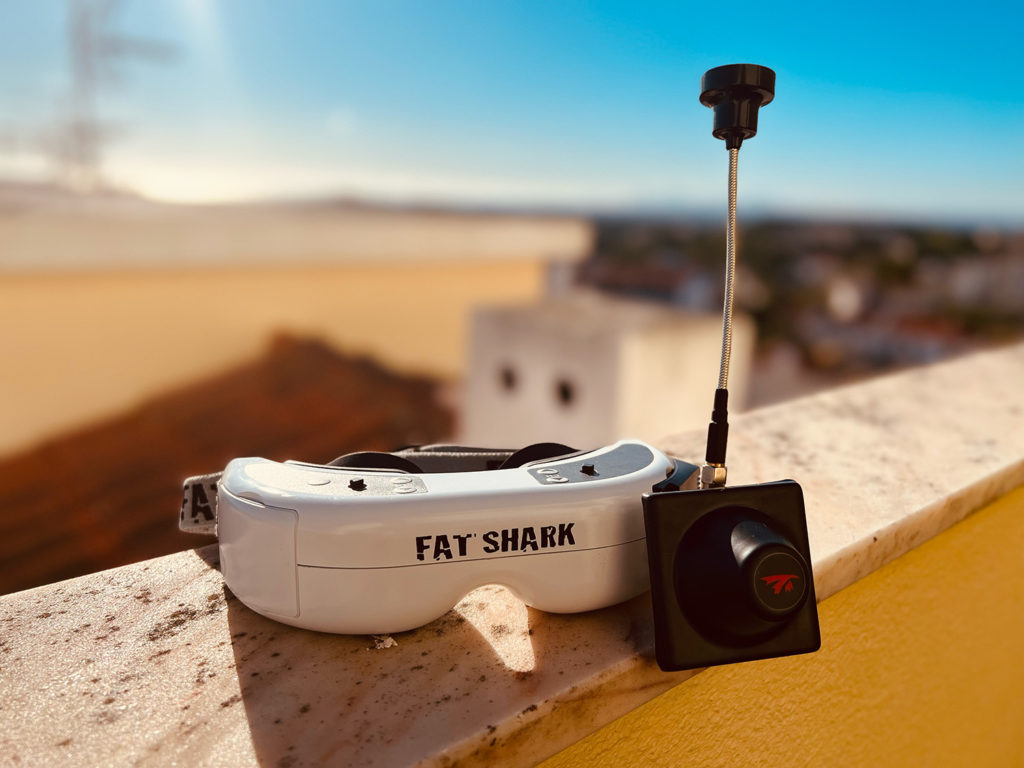
What Firmware Should I use For Long Range FPV?
When considering the best firmware choice for long range FPV, INAV is undoubtedly the best choice due to it’s more sophisticated autonomous flight features.
Most flight controllers for the type of quads that we fly run one of three different firmware choices:
- Betaflight – optimized for flight performance
- INAV – optimized for autonomous flight
- Kiss – optimize for flight performance
Both Betaflight and Kiss are fantastic choices in their own right, however both target flight performance and are therefore the best choice for freestyle or racing.
When it comes to long range FPV, reliability and safety are a top concern. More specifically if we get into difficulty with our signal strength, we want our quad to have the capability of returning home, or at least back in to the range of our signal.
Betaflight does have a functional return to home function called rescue mode and it is certainly worth considering if you absolutely must stick with Betaflight (for example if your flight controller does not support INAV).
However the Betaflight rescue mode is a little under-developed and it is just not quite as reliable as the fully featured return to home function of INAV.
The reason INAV boasts the most solid return to home function, aside from the fact that it’s development is focused on such features, is the fact that it makes use of a magnetometer, also known as a compass sensor.
This allows INAV to nagivate back to safety with far more accuracy.
I have quads running all three different firmware options and I can safely say I am very happy to have INAV on my long range rig.
For further information about INAV, check out these frequently asked questions.
If you are ready to get starting with INAV on your quad, go ahead and check out my article that explains how to get INAV up and running.
What Radio Transmitter Should I use For Long Range FPV?
Deciding on which radio transmitter to use for long range FPV really comes down to two choices, Team BlackSheep Crossfire or ExpressLRS. Either of these options are ideal for pursuing your long range FPV goals.
So why are these two radio transmitter systems the best choice for long range FPV?
When you are first getting in to FPV, there are a whole host of options to suit different pilots, including the whole spectrum of budget right through to premium gear.
However when flying long range FPV it is absolutely crucial to maintain a reliable radio link and therefore it is absolutely necessary to invest in the right gear.
Both the Team BlackSheep Crossfire and ExpressLRS systems are designed for this exact purpose. They are designed to establish an extremely reliable link over a long distance.
Choosing between the Team BlackSheep Crossfire and ExpressLRS should be one of your first decisions when building a long range rig.
It is an in depth topic and one that warrants its own article. For a complete guide to choosing the ideal controller and transmitter for long range FPV, check out this article.

